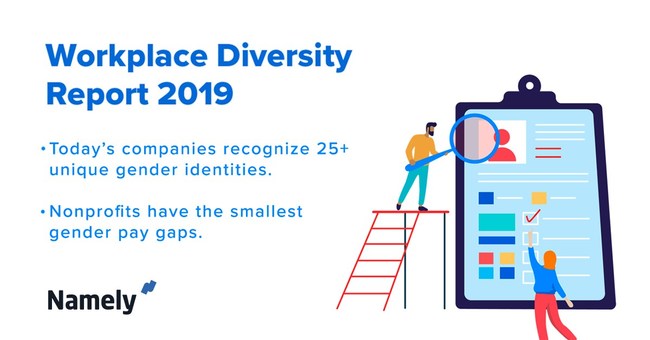Namely, July, 2019.
Namely data shows that mid-market technology companies still struggle with pay equity across gender and ethnicity lines
NEW YORK — Namely, a leading HR platform for mid-sized companies, published its annual Workplace Diversity Report, which sheds light on whether mid-market workplaces are hitting the mark when it comes to diversity and inclusion across genders and ethnicities.
Workforce diversity has gone from a buzzword to a key enabler of business, with diversity and pay equity metrics making their way into the boardroom alongside traditional performance indicators such as revenues and budgets. However, while many companies have invested in diversity, the true impact of these efforts remains unclear.
In the second edition of Namely’s Workplace Diversity Report, research pinpoints where mid-sized businesses are succeeding with diversity and equality, and uncovers opportunities for improvement. Key insights include:
- Ten percent of today’s HR teams offer employees gender identity options beyond “male” or “female.” Within that dataset, companies recognize over 25 unique gender identities, an increase of 5 terms from last year’s report.
- The percentage of non-binary managers (22 percent) does not vary significantly from the overall employee population (19 percent), suggesting there is not a career opportunity gap for workers who identify as non-binary.
- White men make up 63 percent of all managers. Fewer women and non-majority employees occupy positions of authority, and are still subject to lower compensation than their male or majority peers.
- Interestingly, companies with the smallest pay gaps have more equal representation of women in the top salary tier. Nonprofit companies were the most equitable, while technology and healthcare companies were the least.

- While men continue to make up the majority of employees in six out of the ten industries examined in the study, the most gender equal industries were financial services, media, professional services, real estate, and retail.
- The report found a small improvement in workforce diversity at companies with c-level HR or diversity roles, however less than five percent of the most diverse companies had a diversity or c-level HR leader in place – showing that one person is not enough to ensure diversity at a company.
“On the ground, people leaders are making progress on closing the pay gap and moving in the right direction for both women and minorities. Everyone from c-level executives to entry-level employees realize we need to diversify our companies,” said Lorna Hagen, chief people officer, Namely. “HR teams now have more data than ever before to help make that a priority and a reality, but we still have a lot of work to do.”
Namely provides mid-sized businesses with meaningful and actionable insights into what is really going on with their workforce. With its 2019 Workplace Diversity Report, executives can better understand how their workforce stacks up against other companies and use these insights to drive diversity and equality forward.










